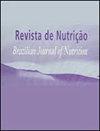围绕运动前和运动后膳食补充剂成分的潜在健康风险:彻底的标签分析
IF 0.5
4区 医学
Q4 NUTRITION & DIETETICS
Revista De Nutricao-brazilian Journal of Nutrition
Pub Date : 2022-01-01
DOI:10.1590/1678-9865202235e200148
引用次数: 0
摘要
【摘要】目的膳食补充剂的使用越来越多。膳食补充剂可能含有高剂量的物质或危险的成分组合。本文旨在调查,通过分析膳食补充剂标签,如果有任何兴奋剂物质或任何其他成分的危险量在审查膳食补充剂。方法对运动前、运动后各品牌补品进行分类分析。包括40种膳食补充剂,所有成分都描述了。膳食补充剂的最小和最大剂量用Mean±SD表示。结果部分膳食补充剂中含有金柑提取物、育亨宾提取物、藤黄果提取物和玛咖根提取物。在咖啡因方面,运动前组的平均咖啡因(241±86mg)高于运动后组(183±68mg),最小平均剂量为226±84mg;同时,最大平均剂量为242±88mg。肌酸方面,运动前组平均肌酸(3106±1079mg)低于运动后组(4137±4177mg),最小平均剂量为3167±1728mg;最大平均剂量为3917±3643mg。运动后组的平均含盐量(2155±4486mg)明显高于运动前组(464±605mg),最小平均剂量为1635±3930mg;最大平均剂量为1708±3926g。结论:膳食补充剂中未发现兴奋剂成分,但标签上的食用建议可能会导致一些未经充分测试的成分过量食用。本文章由计算机程序翻译,如有差异,请以英文原文为准。
Potential health risks surrounding ingredients of pre-workout and post-workout dietary supplements: a thorough label analysis
ABSTRACT Objective Dietary supplements use is increasing. Dietary supplements may contain high doses of substances or dangerous ingredient combinations. This article aims to investigate, by analyzing dietary supplements labels, if there are any doping substances or dangerous amounts of any other component in the reviewed dietary supplements. Methods Several brands which possessed their supplements sorted in pre-workout and post-workout were analyzed. 40 dietary supplements with all ingredients described were included. The minimum and maximum dosages of dietary supplements were statistically described as Mean±SD. Results Citrus aurantium extract, Yohimbe extract, Garcinia cambogia extract and Maca root extract were reported in some of the analyzed dietary supplements. Regarding caffeine, the pre-workout group displayed higher mean caffeine (241±86mg) than the post-workout group (183±68mg), and the minimal mean dose was 226±84mg; meanwhile, the maximal mean dose was 242±88mg. Concerning creatine, the pre-workout group displayed lower mean creatine (3106±1079mg) than the post-workout group (4137±4177mg), and the minimal mean dose was 3167±1728mg; meanwhile, the maximal mean dose was 3917±3643mg. The salt content in the post-workout group displayed a much higher mean (2155±4486mg) than the pre-workout group (464±605mg), and the minimal mean dose was 1635±3930mg; meanwhile, the maximal mean dose was 1708±3926g. Conclusions No doping substances were reported in the dietary supplements, but consumption recommendations on the label could lead to excessive consumption of some not yet fully tested ingredients.
求助全文
通过发布文献求助,成功后即可免费获取论文全文。
去求助
来源期刊
CiteScore
1.20
自引率
12.50%
发文量
24
审稿时长
6-12 weeks
期刊介绍:
Revista de Nutrição is former Revista de Nutrição da Puccamp, founded in 1988. It is a bimonthly publication every four months and it is of responsibility of the Centro de Ciências da Vida, da Pontifícia Universidade Católica de Campinas . It publishes articles that contribute to the study of Nutrition in its many sub-areas and interfaces; and is open to contributions of the national and international scientific communities.

 求助内容:
求助内容: 应助结果提醒方式:
应助结果提醒方式:


